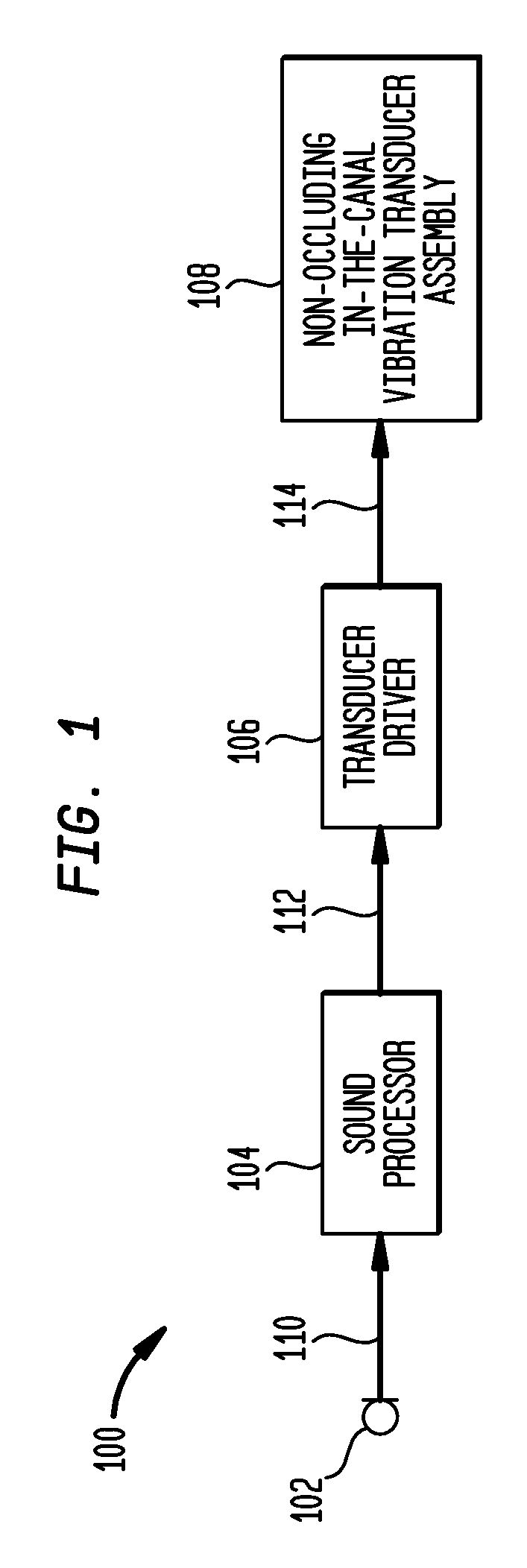Hearing device having a non-occluding in the canal vibrating component
a technology of vibrating component and hearing device, which is applied in the field of hearing devices, can solve the problems of conductive hearing loss, impeded normal mechanical pathways for sound to reach the hair cells in the cochlea, and individual sufferers suffering from sensorineural hearing loss
- Summary
- Abstract
- Description
- Claims
- Application Information
AI Technical Summary
Benefits of technology
Problems solved by technology
Method used
Image
Examples
Embodiment Construction
[0033]Aspects of the present invention are generally directed to a self-retaining bone conduction hearing device having a sound processor and a non-occluding in-the-canal vibrating component responsive to the sound processor and configured for non-surgical-implantation in a recipient's ear canal. Utilizing bone conduction eliminates the dependency on acoustic stimulation, thereby enabling the hearing device of the present invention to address a wider range of sound frequencies in conductive hearing loss.
[0034]Unlike conventional hearing devices having an in-the-canal component, the hearing device of the present invention does not occlude the ear canal nor does it interrupt the ossicular chain. In other words, the present invention does not interfere with a recipient's remaining natural hearing nor the normal biological functioning of the ear. For example, embodiments of the present invention facilitate the normal egress of cerumen (ear wax) and the normal circulation of air, thereby...
PUM
 Login to View More
Login to View More Abstract
Description
Claims
Application Information
 Login to View More
Login to View More - R&D
- Intellectual Property
- Life Sciences
- Materials
- Tech Scout
- Unparalleled Data Quality
- Higher Quality Content
- 60% Fewer Hallucinations
Browse by: Latest US Patents, China's latest patents, Technical Efficacy Thesaurus, Application Domain, Technology Topic, Popular Technical Reports.
© 2025 PatSnap. All rights reserved.Legal|Privacy policy|Modern Slavery Act Transparency Statement|Sitemap|About US| Contact US: help@patsnap.com



